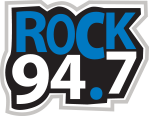KEWAUNEE, Wis.-With spring steelhead fishing underway on Lake Michigan tributaries, state fisheries biologists are asking anglers to assist with an important steelhead research program currently underway. Wisconsin Department of Natural Resources fish biologists are asking anglers to report marked fish by submitting reports about what they caught, where and when.
Steelhead stocked into Lake Michigan tributaries during 2018 and recently in spring 2019 were marked with an adipose fin clip and tagged internally with coded wire tags. Steelhead are typically stocked as yearlings or at age 1, so steelhead initially marked and tagged in 2018 are now two years old and about 15 to 20 inches.

DNR fisheries technicians Derek Apps (front) and Roman Frey (back) with a steelhead processed at the Besadny Anadromous Fish Facility on April 10, 2019.Photo credit: DNR
"These fish have now reached catchable and harvestable size, so we're asking anglers who catch steelhead with the adipose fin clip to let us know," says Nick Legler, DNR fisheries biologist based in Sturgeon Bay.

This diagram shows a fish with ONLY a missing adipose (back) fin.
Anglers have already caught some marked steelhead, with a few also showing up in reports from state egg collection facilities: the Besadny Anadromous Fisheries Facility on the Kewaunee River and Root River Steelhead Facility on the Root River. Anglers are encouraged to help, by collecting information and samples through either a volunteer return program accessible through dnr.wi.gov, search " missing fin ," or the Great Lakes Angler Diary at https://glanglerdiary.org/ .
Overall, the Great Lakes Mass Marking program seeks to evaluate salmonid wild production, movements, growth, and stocking methods. Also important to steelhead management is an evaluation of different genetic strains, such as Chambers Creek and Ganaraska strains. These will be interesting things to learn about steelhead, that will help guide steelhead management.
Collectively, all Chinook salmon and lake trout were marked with adipose fin clips and coded wire tags from 2011-2016, in a process shown in the video below. Since 2017, lake trout are still clipped and tagged, Chinooks are now just clipped, while steelhead are now clipped and tagged.
"Great information has and continues to be collected from past and remaining tagged Chinooks," Legler says. "This new focus on tagged steelhead is an exciting next chapter for the Great Lakes Mass Marking program. With anglers' help, it is sure to provide useful information to help manage and sustain a great fishery in Lake Michigan for years to come."
This effort is thanks to the Great Lakes Mass Marking Program, United States Fish and Wildlife Service, Kettle Moraine Fish Hatchery, and many collaborators around Lake Michigan.




